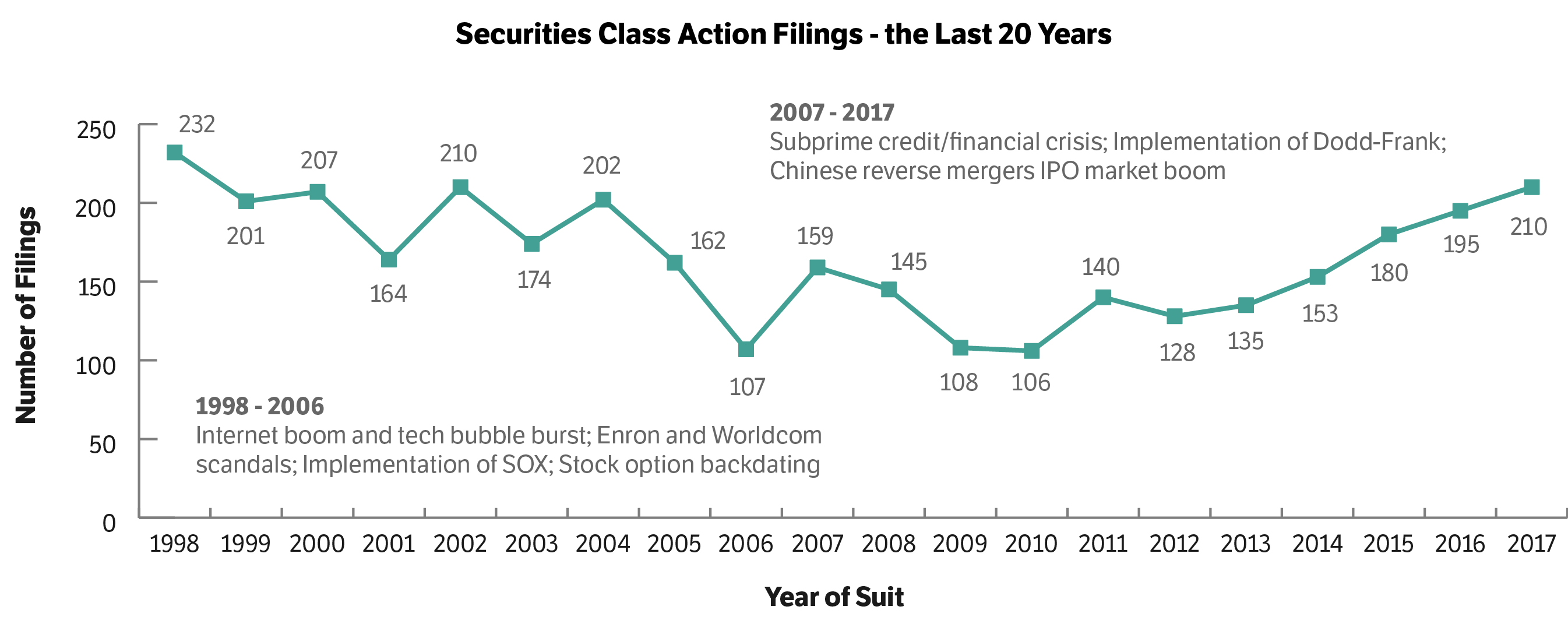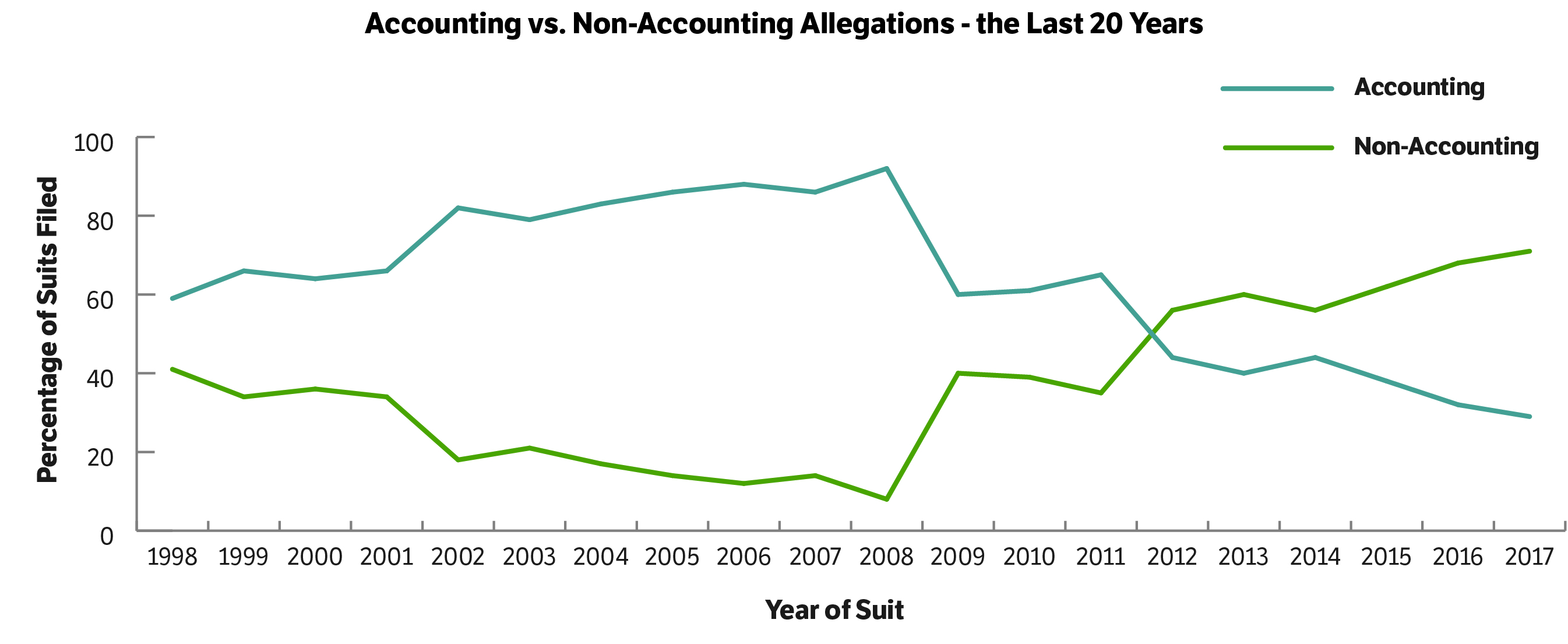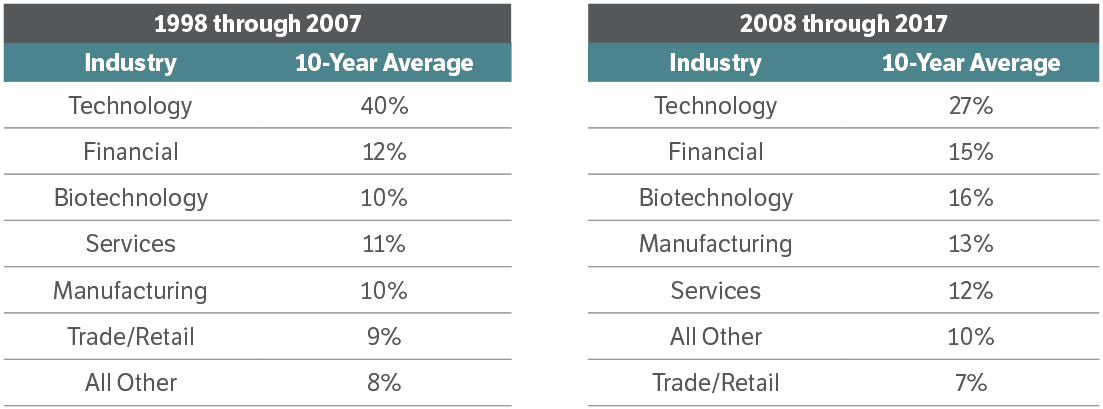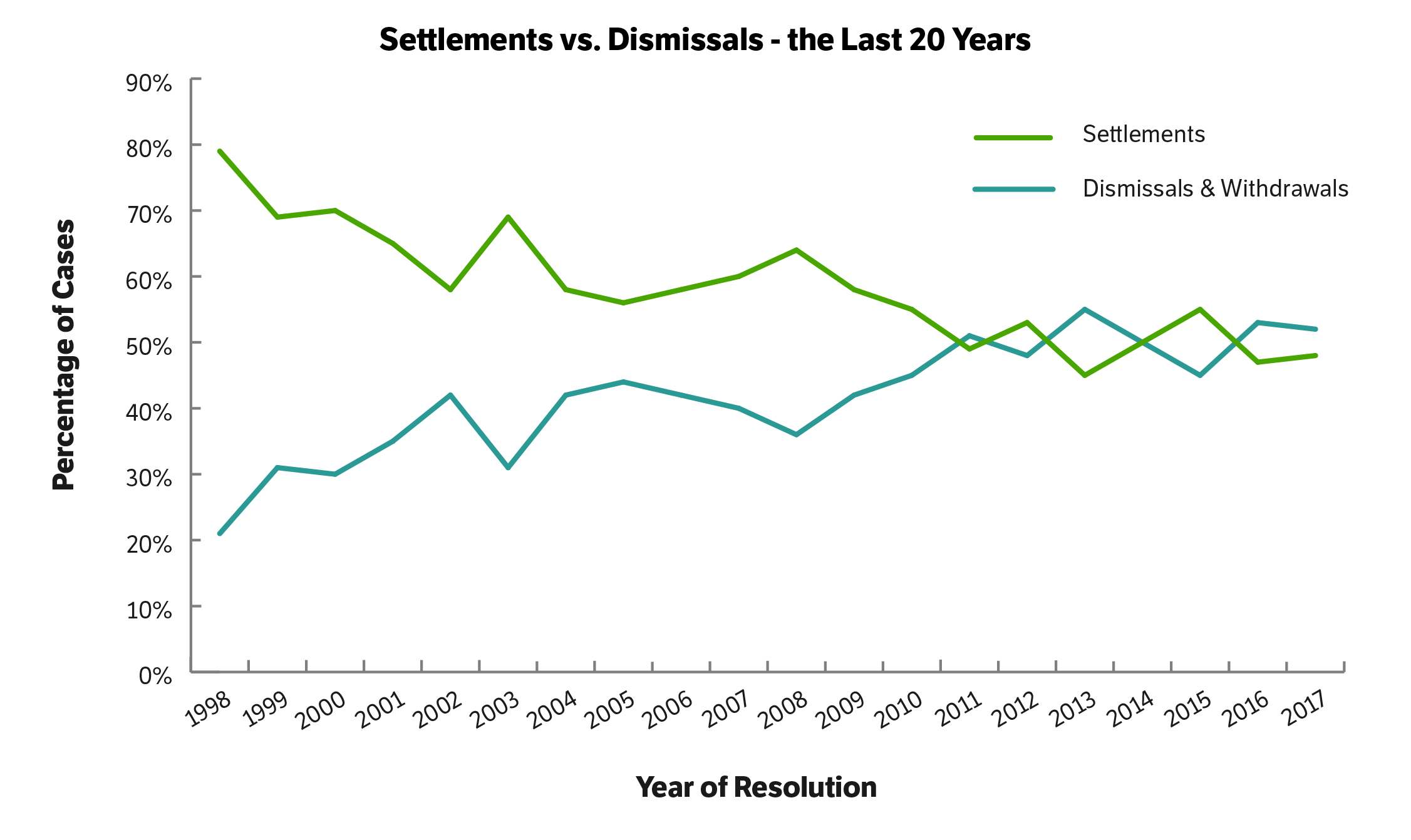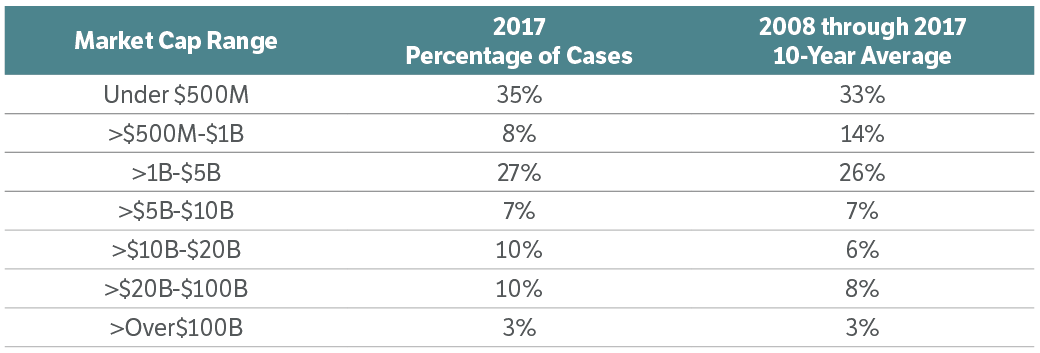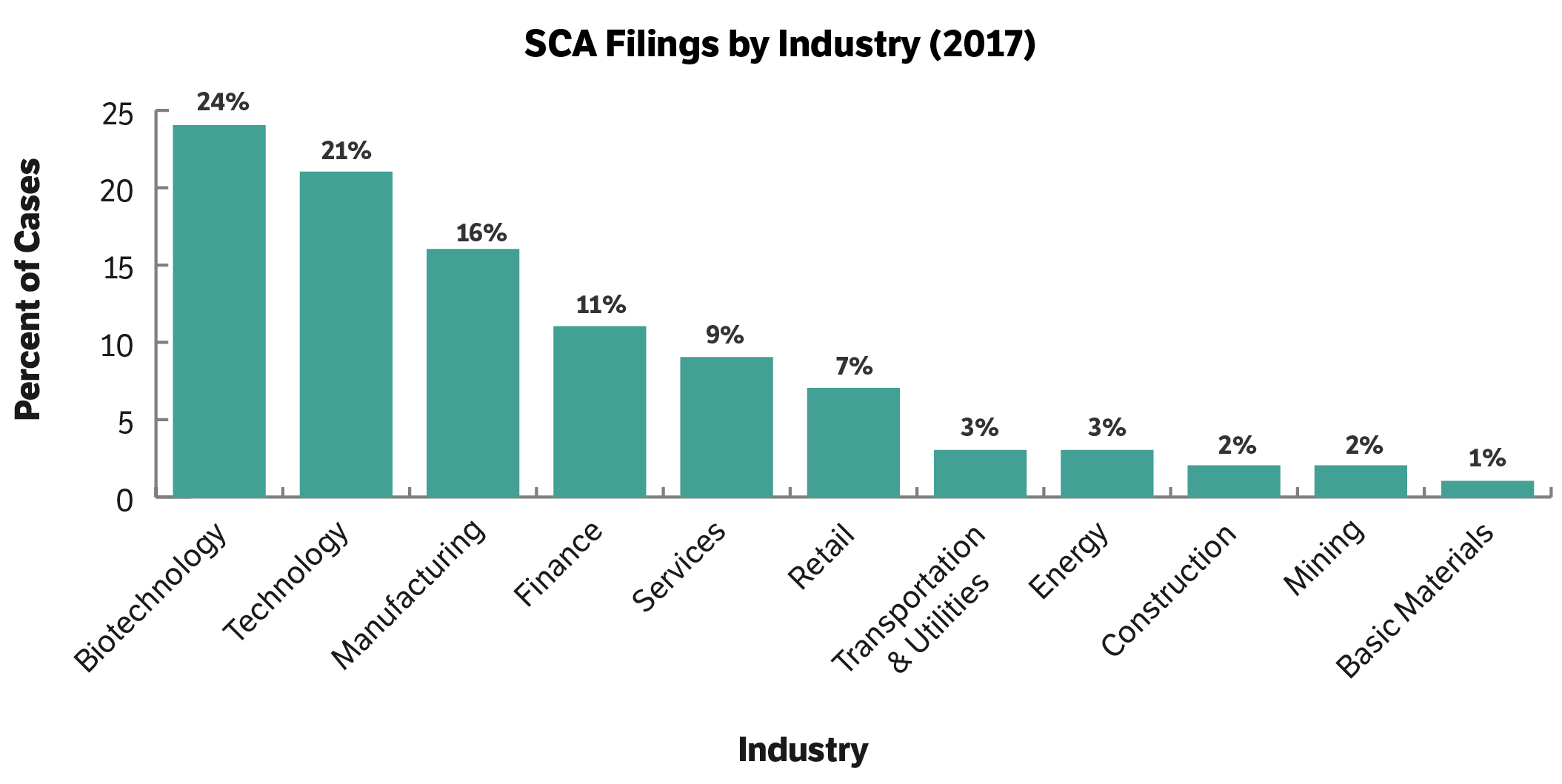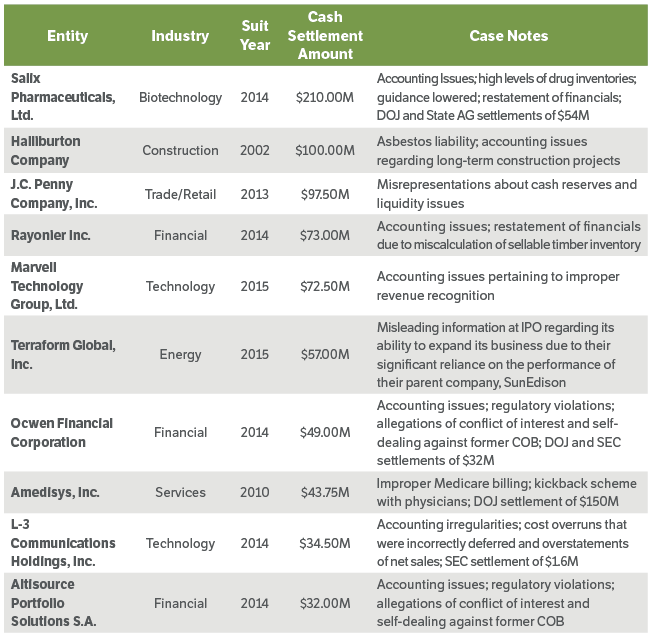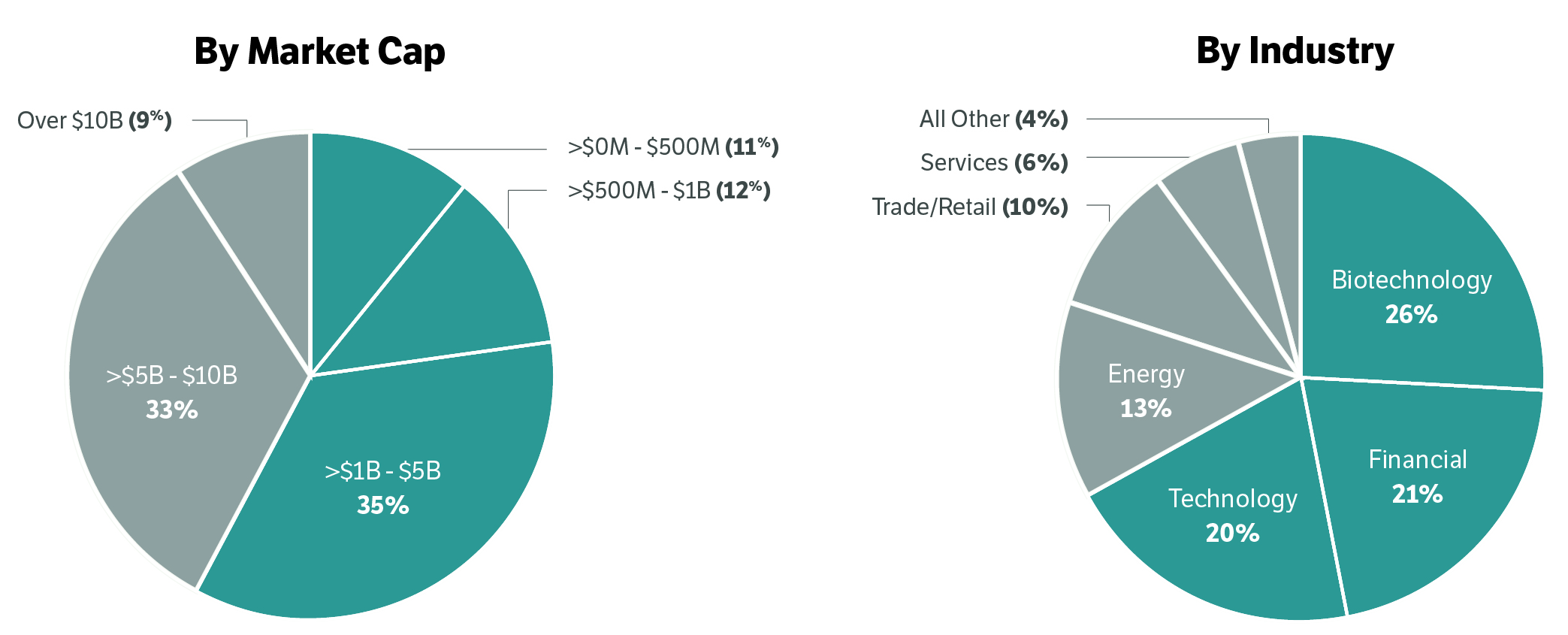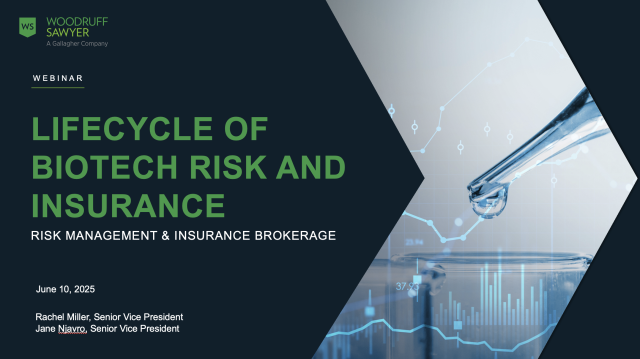Blog
Why 2017 Was a Record Breaking Year for Securities Class Actions
The past no longer predicts the present when it comes to securities class action suits. In this edition of the D&O Databox Flash Report, we will discuss 2017and contextualize what we are seeing by contrasting it with a 20-year look back on the securities class action litigation environment. We've seen changes in the nature of the allegations filed, the companies plaintiffs target, dismissal and settlement dynamics, and even the venues in which cases are brought.
2017 surpassed 2016 in total number of securities class actions (SCAs) with an 8% increase over 2016. 210 securities class action suits were filed in 2017 as compared to 195 suits filed in 2016. 2017 has the distinction of being the year for which the highest number of filings occurred in the last 10 years.
What sets 2017 apart from the others and what does this mean for the coming year?
The short answer to this two-part question is this: what happened in the past is no longer the blueprint for the current environment. For starters, lets take a further look back in time for securities class action filings a 20-year lookback and some notable events during that period:
At the beginning of this period, there was a 20-year high of 232 suits filed. By 2006, filings had dropped to a significant low of 107 filings per year. In the current 10-year period, filings are back up to over 200 suits filed in 2017.
Changing Allegations. Of course the stock market and legislative activity have impacted SCA filings. More interesting, however, is that the data reveals a shift in the nature of the filing activity. The following chart illustrates the frequency of accounting vs. non-accounting allegations over the past 20 years:
When the accounting scandals of Enron, Worldcom and Tyco led to SOX legislation in 2002, companies found, with the implementation of rigorous internal auditing, that there were material weaknesses and deficiencies in their internal controls that needed to be addressed. These internal control issues made companies vulnerable to SCA suits. 15 years later, accounting issues are certainly still an ongoing concern, but have dropped to a 10-year average of 48% of cases for the recent 10-year period of 2008 to 2017. This is a sharp drop from the previous 10-year average of 76% of cases filed from 1998 to 2007.
As accounting allegations have abated over the last decade, plaintiffs have shifted their focus to other missteps. Specifically, they have filed more cases in the following categories:
- Misrepresentations concerning revenue growth where quarterly results or projected revenue forecasts did not meet Wall Streets expectations; and
- Product and operational issues.
This change was noted by Michael Klausner, Professor of Law, at Stanford Law School, and Jason Hegland, Executive Director, Stanford Securities Litigation Analytics in their analysis of class action filings from 2006 through 2015.
Changing Nature of Plaintiff Targets. The make-up in companies being sued has also changed:
By Industry Technologys 10-year average dropped one-third in the last 10 years. Financial and biotechnology companies took up the majority of that slack. While the credit crisis impacted the financial industrys average this past decade, it is the biotechnology industry that has really seen a dramatic increase in filings in the last 10 years. In 2008 only 9% of the suits were filed against biotechnology companies as compared to 2017 in which the percent of suits against biotechnology companies increased to a notable high of 24%.
By Foreign-Domicile Chinese companies contributed to the increase in foreign companies being sued in the last ten years. However, even setting aside Chinese companies, there has been a 44% increase in the percentage of lawsuits filed against foreign companies in the last 10 years as compared to the previous 10 years (from 9% to 13%).

By Market Capitalization The average percentage of suits brought against the smallest companies (less than $500 million in market capitalization) in the last ten years dropped 10% as compared to the previous ten years. At the same time, there was an increase in the average percent of suits brought against both mid-cap companies (>$1B-$10B) and large-cap companies (>$10B) being sued:
It should be noted that some of this movement may be attributed to the growth of stock values of established companies and the increased M&A activity in the last 10 years.
Change in Dismissal and Settlement Dynamics. In addition to the shift in types of allegations, types of companies and size of companies sued, there has also been a shift in settlement and dismissal rates as illustrated below:
Settlement and dismissal rates in the last seven years have converged, as opposed to the previous 13 years in which settlement rates were always higher than dismissal rates. There are various factors that have contributed to this change, but the primary factor appears to be accounting allegations. In the past, such cases were more likely to result in a settlement than a dismissal due to the likelihood that audit investigations and/or the discovery process revealed accounting fraud or missteps. As accounting issues have abated, so has the rate at which securities class action cases are settled.
However, in the last 10 years, while settlement rates went down, the median and average cash settlement amounts went up:
Additional Venue. It is also worth noting that in the last decade, shareholders have been actively suing in state courts as well:
- Mergers and Acquisitions: M&A deals were being actively challenged by shareholders mainly in state courts (in particular, Delaware) starting in 2007. It reached a peak in 2013 in which 94% of all M&A deals valued over $100M were being disputed. Following the Trulia and Aruba decisions by the Delaware Chancery Court in early 2016, there was a dramatic shift in the filing of these cases from state courts to federal courts in 2017.
- Section 11 cases in California state courts: Due to a quixotic interpretation of federal law in 2008 by the 9th Circuit pertaining to the filing of Section 11 claims, shareholders stepped up filing activity in California state courts against companies engaged in IPOs and secondary offerings. The majority of the filing activity occurred in 2015 and 2016 (31 of 50 cases). In 2017 filing activity dropped down to five cases. In 2018, the US Supreme Court will determine whether state courts can adjudicate claims filed solely under Section 11 of the Securities Act of 1933 (Cyan, Inc. v. Beaver County Employees Retirement Fund).
- Breach of fiduciary duty cases: Since 2008 there have been 13 breach of fiduciary duty cases in state courts that have resulted in large settlements ranging from $62.5M to $275M. The allegations in these cases have pertained to a wide range of matters such as M&A deals, product safety issues, Medicare fraud, and sexual and racial harassment claims. Events like these that are widely reported on, along with the current concerns relating to cybersecurity, are fertile ground for more suits of this type.
The bottom line? SCA filing activity is up, and SCA claims currently have an almost 50/50 chance of being settled vs. dismissed due to the nature of the allegations, with settlement amounts on average higher than the previous 10-year period. Shifts in company industry, location and size have also factored into the rise in filings. Add to this the additional state court activity described above, and the result is a very frothy environment for D&O litigation. While we currently do not anticipate that SCA filings in 2018 will exceed the total number of filings in 2017, we do believe that overall litigation activity will continue at a brisk pace.
Overview of 2017 SCA Activity
New Filing Activity
- By Market Cap as compared to 10-Year Average:
Suits against large cap companies in the >$10B-$100B range had dropped down from a high in 21% in 2008 to a low of 7% in 2015 a drop due largely to the passing of the financial crisis. Since 2016, the percentage against large cap companies has risen back up to a high of 20%.
- By Industry Biotechnology leads in cases filed, a first for the industry:
Settlement Activity
- SCA Settlements 79 cases settled for a combined cash settlement amount of $1.4B.
There were fewer large dollar settlements in 2017 causing a drop in the median and average.
The drop in large dollar settlements is further illustrated below in that the top 10 settlements in 2017 had a dollar range of $32M to $210M in 2017. In 2015 and 2016, the top 10 settlements ranged from $80M to $1.5B.
- Percentage of settlement $ as paid out by size and type of company in 2017 are as follows:
- Dismissals
- There were 87 cases that were either dismissed or withdrawn in 2017 as compared to 80 cases in 2016 an 8% increase. 23% of those cases were due to withdrawals, a 127% increase over 2016 (25 cases in 2017 vs. 11 cases in 2016). The 10-year average for dismissals/withdrawals is 60.4 cases per year.
For More of the Latest News
We invite you to subscribe to our blog as an additional resource for staying informed on current news and events as it pertains to D&O liability. D&O Notebook: Directors & Officer Liability Blog focuses on D&O liability insurance and corporate governance matters, including ways to reduce exposure to shareholder lawsuits and regulatory investigations.
Recent blog posts that may be of interest to you:
- Employment Liability Claims: Three Simple Steps to Avoid Unnecessary Friction
- Before You Get Pushed Out: Protecting Yourself Against Future D&O Claims
- D&O Claims During M&A - Notice the Claim Before Its Too Late
About the D&O DataBox
D&O DataBox is Woodruff Sawyers proprietary director and officer litigation database. Included within the D&O DataBox is information concerning every securities class action lawsuit filed against public company directors and officers since 1988. Woodruff-Sawyer uses the D&O DataBox to help its clients model their D&O litigation-related risk. For questions about the D&O DataBox, please contact Donna Moser (dmoser@woodruffsawyer.com or 415.402.6526).
1For purposes of tracking issuer-related securities litigation, the D&O Databox focuses exclusively on securities class action lawsuits against public companies by holders of common or preferred stock for which there was a decline in stock price.
Author
Table of Contents



